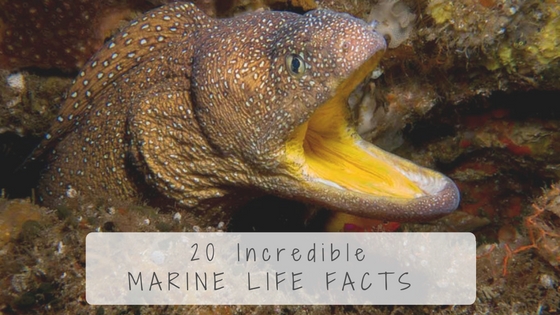Welcome to Facts Vibes, where we dive into the fascinating world of marine biology! From jaw-dropping creature features to mind-blowing ecosystem dynamics, join us as we uncover the most captivating fun facts about the mysteries that lie beneath the ocean’s surface. Let’s explore the wonders of marine life together!
Exploring Fascinating Marine Biology Fun Facts
Marine biology is a captivating field filled with fascinating discoveries and interesting fun facts. One intriguing fact is that the colossal squid, which is one of the largest known invertebrates, has eyes that are as big as basketballs. This remarkable creature inhabits the depths of the ocean, making it a mysterious and awe-inspiring species to study.
Another fun fact in marine biology is that some species of fish can change their biological sex. For instance, clownfish are protandrous hermaphrodites, meaning they are initially male and can later change into females. This unique adaptation is essential for maintaining balanced populations within their social structures.
Additionally, the blue whale, known as the largest animal on Earth, has a heart that weighs as much as a car. This astonishing fun fact emphasizes the immense size and power of these majestic creatures, providing a glimpse into the remarkable world of marine biology.
The biodiversity and complexity of marine life offer an endless array of fascinating and mind-boggling fun facts waiting to be discovered and appreciated. From the smallest organisms to the largest mammals, the world beneath the waves never fails to amaze and inspire us with its wonders.
Most popular facts
The ocean is home to over 230,000 known species, but it is estimated that there may be millions of marine species yet to be discovered.
The ocean is home to over 230,000 known species, but it is estimated that there may be millions of marine species yet to be discovered.
The blue whale, the largest animal on Earth, is a marine mammal and can reach lengths of over 100 feet.
The blue whale, the largest animal on Earth, is a marine mammal and can reach lengths of over 100 feet.
Some species of fish can change sex during their lifetime, a phenomenon known as sequential hermaphroditism.
Some species of fish can change sex during their lifetime, a phenomenon known as sequential hermaphroditism.
The Great Barrier Reef is the world’s largest coral reef system, stretching over 1,400 miles off the coast of Australia.
The Great Barrier Reef is the world’s largest coral reef system, stretching over 1,400 miles off the coast of Australia.
Marine bioluminescence, the production of light by living organisms in the ocean, is a common phenomenon and is used for communication and camouflage.
Marine bioluminescence is a common phenomenon in the ocean, where living organisms produce light for communication and camouflage.
The deepest part of the ocean, the Mariana Trench, reaches a depth of about 36,070 feet (10,994 meters).
The deepest part of the ocean, the Mariana Trench, reaches a depth of about 36,070 feet (10,994 meters).
The clownfish and sea anemone have a unique symbiotic relationship where they rely on each other for survival.
The clownfish and sea anemone have a unique symbiotic relationship where they rely on each other for survival.
Many marine animals, such as dolphins and whales, use echolocation to navigate and communicate in the water.
Echolocation is used by many marine animals, such as dolphins and whales, to navigate and communicate in the water.
The Portuguese man o’ war is not a single organism but a colony of specialized individual animals called zooids working together.
The Portuguese man o’ war is not a single organism but a colony of specialized individual animals called zooids working together.
Seahorses are one of the few animal species where the males give birth to their offspring.
Seahorses are one of the few animal species where the males give birth to their offspring.
Some jellyfish are considered biologically immortal because they can revert back to their juvenile stage after reaching maturity.
Some jellyfish are considered biologically immortal because they can revert back to their juvenile stage after reaching maturity.
Marine sponges, despite their simple appearance, contain complex chemicals that have potential medical and industrial applications.
Marine sponges contain complex chemicals with potential medical and industrial applications.
The blue-ringed octopus is one of the most venomous marine animals, carrying enough venom to kill humans within minutes.
The blue-ringed octopus is one of the most venomous marine animals, carrying enough venom to kill humans within minutes.
The ocean absorbs about 30% of carbon dioxide produced by humans, helping to mitigate the impact of climate change.
The ocean absorbs about 30% of carbon dioxide produced by humans, helping to mitigate the impact of climate change.
The study of marine biology is critical for understanding and preserving the health of ocean ecosystems and the diverse life within them.
The study of marine biology is critical for understanding and preserving the health of ocean ecosystems and the diverse life within them.
In conclusion, marine biology is a fascinating and diverse field that offers a wealth of intriguing fun facts. From the incredible biodiversity of marine life to the extraordinary adaptations of creatures in their underwater environments, there is no shortage of amazing information to discover. These fun facts not only showcase the wonders of the ocean but also highlight the importance of protecting and preserving our marine ecosystems for future generations to enjoy.
